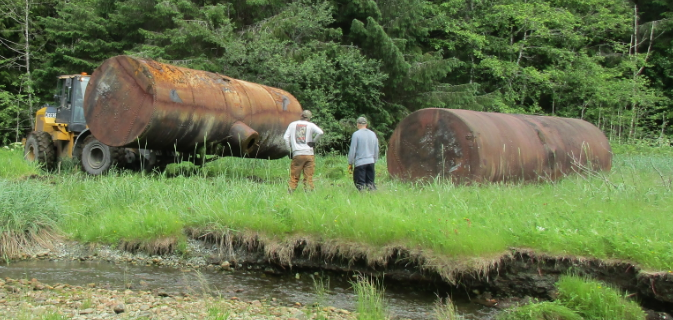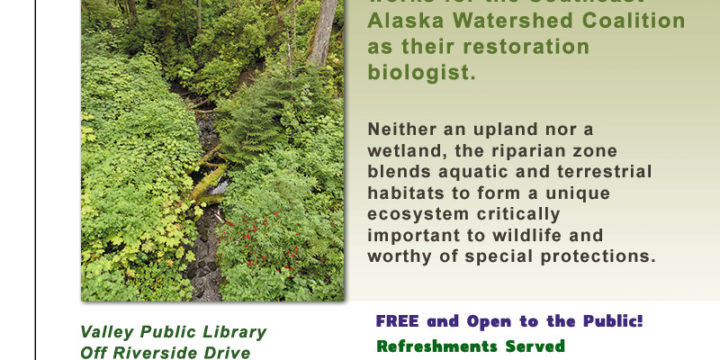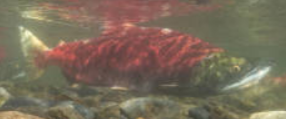
Klawock Lake Sockeye Salmon Action Plan
Sockeye salmon from Klawock Lake have been important to the livelihood and culture of the people of Klawock, Craig, and Prince of Wales Island for millennia. Over the last two decades there have been significant declines in the number of fish returning to the Klawock Watershed, and a group of tribal, native corporation, government, non-profit, and private sector partners are working to reverse this decline. With support from the National Fish and Wildlife Foundation and with facilitation and coordination from Kai Environmental, this group of stakeholders and community members has produced the Klawock Lake Sockeye Salmon Action Plan. The purpose of the Klawock Lake Sockeye Salmon Action Plan is to help guide landowners, stakeholders and the Klawock community in promoting healthy and sustainable sockeye salmon populations in Klawock Lake for…
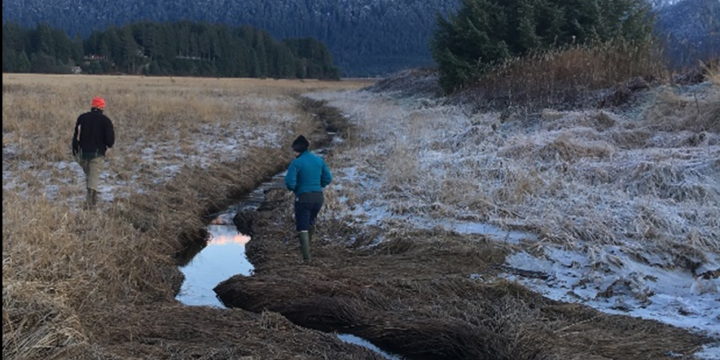
Restoration Potential in the Mendenhall Wetlands
The Mendenhall Wetlands, extensive intertidal and estuarine wetlands between the Juneau mainland and Douglas Island, are a globally recognized Important Bird Area, an ecological hotspot in Southeast Alaska, and a treasured recreation area for Juneau. These wetlands have been heavily impacted by urbanization and resource development over the years, leading to habitat degradation and fragmentation. The Watershed Coalition recently completed a restoration opportunity assessment for the area to identify sites that have been altered or degraded but have the potential to be restored. We identified projects on several city, state, and private properties, and are already exploring some of these opportunities with the land owners and managers. We anticipate that this US Fish and Wildlife Service-funded assessment will lead to multiple wetland habitat restoration projects that reconnect and rehabilitate habitat…
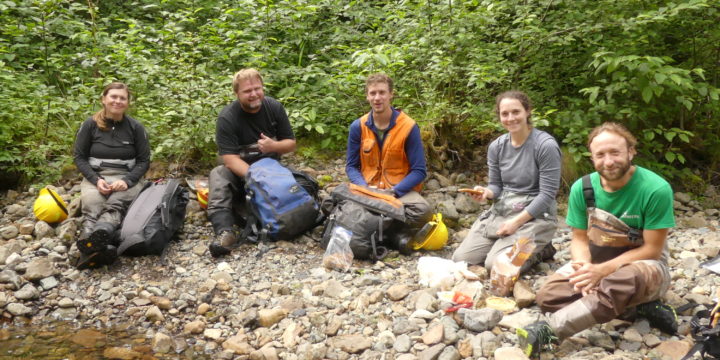
Klawock Lake Watershed: Threemile Creek Restoration Opportunities
For: Klawock Sockeye Salmon Stakeholder Group By: Southeast Alaska Watershed Coalition: John Hudson, Rob Cadmus, and Rebecca Bellmore and The Nature Conservancy: Conor Reynolds. Click for the full report below. [gview file="https://www.alaskawatershedcoalition.org/wp-content/uploads/2019/11/Klawock-Threemile-Restoration-Opportunities-10_9_19-min.pdf"]
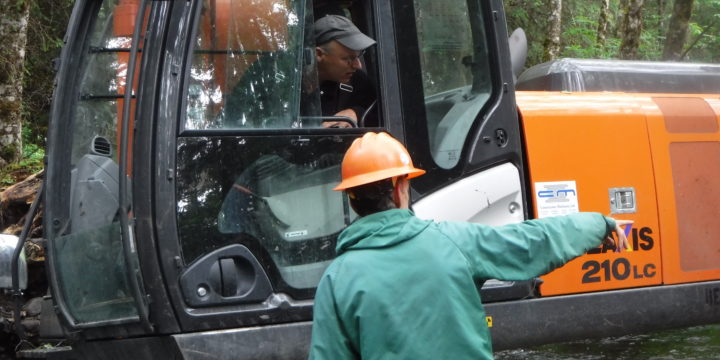
Before and After Restoration at Pat Creek
Restoration of salmon habitat at Pat Creek near Wrangell is underway. SAWC and our partners are adding large woody debris to about 1 km of stream. Fish like trees (when they fall in they create pools and other preferred habitats). The lack of mature trees along (and also in) the creek has resulted in less than optimal fish habitat including overwidened areas lacking pools and cover. Here is a before and after shot from the same spot on Pat Creek that shows the addition of large wood. Before After
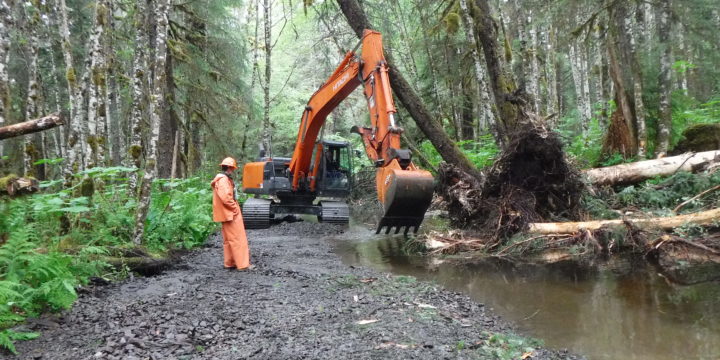
Work Starts for the Pat Creek Fish Habitat Enhancement Project
Work started today on SAWC's Pat Creek Fish Habitat Enhancement Project! Photo: Mike Brunfelt, with Interfluve, Inc., works with Brett Woodbury, BW Enterprises to improve fish habitat to Wrangell's Pat Creek. Location: Wrangell Island, Southeast Alaska Fish: Salmon (Coho, Pink, Chum, Sockeye), Dolly Varden char, Cutthroat Trout History: The valley bottom was logged in the 1960’s-70’s. This logging occurred before stream buffers were required, and trees on the stream’s banks were harvested. Restoration Need: Fish like trees (when they fall in they create pools and other preferred habitats). The lack of mature trees along (and also in) the creek has resulted in less than optimal fish habitat including overwidened areas lacking pools and cover. The Project: During the summer of 2019, “large wood” (tree trunks/roots) will be added to…
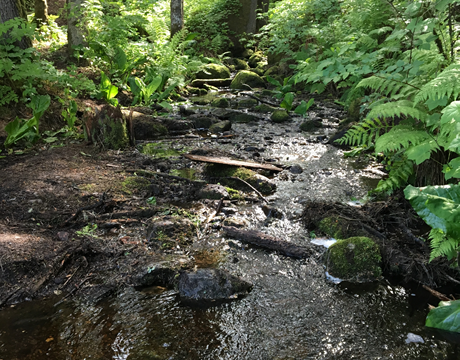
Wrangell Area Watersheds Assessment
As the community of Wrangell continues to grow and develop, the City and Borough of Wrangell and its residents have sought to identify and prioritize local aquatic resources to better plan for future land development and strategize potential restoration-based mitigation opportunities. In an effort to support the informed management of Wrangell’s watersheds and aquatic resources, the Southeast Alaska Watershed Coalition (SAWC) has undertaken the Wrangell Area Watersheds Assessment. The purpose of the Wrangell Area Watersheds Assessment was to compile a dataset and report outlining key aquatic resources within the City and Borough of Wrangell, including an assessment of the current habitat condition of key aquatic resources, identification of sites that could benefit from restoration treatment, and outlining watershed management challenges and opportunities. The community of Wrangell and its surrounding area…
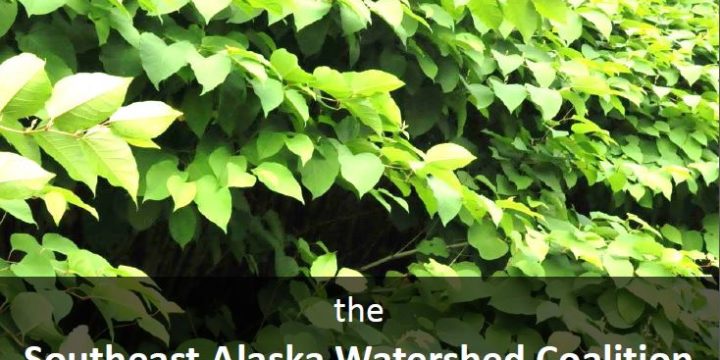
WANTED: Bohemian knotweed (Dead)
Most people don’t worry much about invasive plants during the winter months. After doing battle with them all summer or watching them take over our yards and open spaces during the growing season, we relax as the last of them die back in the fall. As cold winter weather grips the landscape, we take comfort knowing these aggressive species are tucked away in frozen soil for several months. As someone who’s attention is drawn to every infestation they see while out and about during the summer, I’m certainly enjoying this invasive plant-free time of year. While invasive plants may be out of our sight right now, they definitely should not be out of our mind. Now is the time to make plans for defeating these unwanted invaders. In 2018 SAWC…
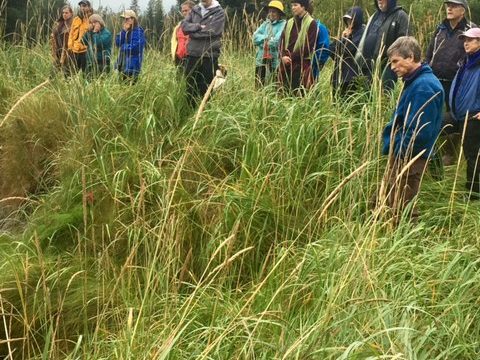
SAWC Participates in Gustavus’ Community Curiosity Series
SAWC restoration biologist John Hudson traveled to Gustavus to participate in the “Community Curiosity Series.” Gustavus resident Susan Brook developed the series as an opportunity for locals to learn about the natural history of the area. Topics this summer included moose ecology, geology, and lodgepole pine decline. John lead 24 participants on a watershed walking tour of Harry Hall Creek, a small groundwater fed stream that provides important habitat for salmon, trout, and char in the Good River watershed. Participants visited a culvert that blocks fish migration as well as one of several new bridges that have replaced barrier culverts along the stream. Using coho salmon as an example, John discussed the need for removing man-made barriers in watersheds so that adult and juvenile fish can access seasonal habitats used…

